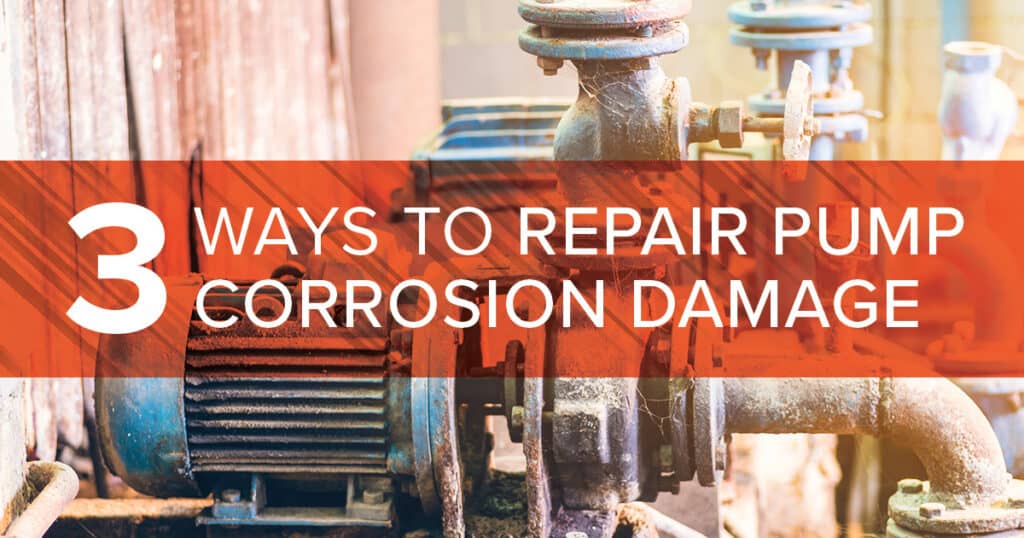Corrosion and erosion are unavoidable in many pump applications. Even the most protected operating environments can bring external factors that corrode parts, develop rust, or cause natural erosion to welds and key connection points. Corrosion can also happen from the inside when dealing with harsh process materials. This wear and tear can ultimately lead to equipment damage and poor system performance. You can take proactive and reactive steps to minimize the effects of corrosion and erosion damage in your pump equipment.
Repairing corrosion damage generally comes down to three issues: coating, welding, and machining. The best repair and preventative maintenance solutions focus on a combination of all three. Each is equally important to the overall health and performance of your pump when dealing with challenging environmental conditions.
Repairing Coating
Coating repair products are generally simple and affordable, and they are a satisfactory place to start when battling the effects of corrosion and erosion. It’s important to follow the product instructions carefully to avoid failures and complications. All surfaces being recoated should be thoroughly cleaned. Any grease, oil, or surface rust should be removed for the best results. A rough surface often works better with coating repair solutions, so some sandblasting may be recommended for a longer-lasting repair. Be sure to protect machine surfaces and other areas where you don’t want to apply the coating repair compound. Mask those surfaces carefully.
Many coating repair products offer contrasting color presentation that can aid in future visual inspections. It’s easier to see when recoated surfaces experience wear, and new coats may need to be applied.
Welding Solutions
Of course, welding pump parts can be tedious and challenging. Many cast pump components are difficult to weld effectively. Machined surfaces may need to be reworked before welding can be done. Surfaces must be heated evenly, and it takes a skilled welder to achieve durable results. However, quality welding can definitely make a significant difference when repairing corrosion and erosion damage to pump systems. It takes time, skill, and patience to do it right. Otherwise, it may provide a temporary fix that will need to be addressed again later once the weld weakens. Pay careful attention to welded parts and connections when performing pump system inspections and maintenance.
Machining Repairs
When rabbet surfaces are damaged through corrosion, erosion, or other forces, machining repairs may be required. Proper machining repairs also need superior engineering to ensure everything is fitted and aligned correctly when remachined parts are reinstalled. Pump alignment is always a critical factor, along with maintaining perpendicularity and concentricity of machined surfaces. Machining repairs can affect the axial position of any precision component (wear ring, bearing, mechanical seal, etc.). Minor deviations and misalignments can cause major problems within the equipment once running. Machining repairs can provide excellent durability, as long as all the work is done with precision engineering.
Proper Equipment Configuration
The above solutions provide repair options for worn and damaged surfaces due to erosion and corrosion. Preventative measures also can be taken to minimize the effects. It starts with selecting the right pump equipment and coatings to suit your operating environment and application. Other custom system configuration may be required to achieve the best long-term results. Improving the pump’s sheltering also can protect it from the elements, though that’s not always an option with some outdoor operations. Then, addressing natural wear and tear is critical to your ongoing pump maintenance plan. The earlier you catch and repair damage, the longer your parts will last.
For all your pump management needs, including equipment selection and professional repair services, contact DXP Pacific today.

